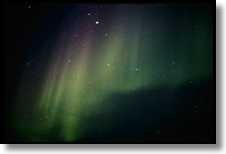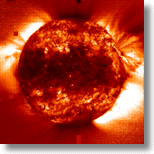|
R o d n e y V i e r e c k Leader of the Data and Instrumentation Group Research Division NOAA Space Environment Center
I obtained a Ph.D. Degree in 1988 with my thesis topic (naturally a little more
complex-sounding!) being: "High Latitude Mesospheric Temperatures and Dynamics obtained
from OH (6-2) and O2 (0-1) Airglow Emissions." Now that may sound rather esoteric, but it
led me to some very interesting work experiences.
Work History
From 1988 to 1996 I worked at the U.S. Air Force Research Laboratory in Boston, MA. I
studied the interaction between spacecraft and the space environment. Most of my work
involved designing experiments for the Space Shuttle. I would then train the astronauts
on how to do my experiments. While they were up in space, I would work at Johnson Space
Center in Houston or at Goddard Space Center near Washington, DC.
On one experiment, I collected data from the top of the island of Maui where the Air
Force has a very sophisticated telescope and tracking system. During my eight years at
the Air Force Research Lab, I supported 12 Shuttle missions.
From 1996 up to the present, I've been at NOAA's Space Environment Center in Boulder
CO. Now I am studying how the Sun affects the earth. I study the solar Ultraviolet (UV)
and x-ray radiation that reaches Earth and how it affects the upper atmosphere. I am
working on an Extreme Ultraviolet (EUV) Solar Instrument that will fly on the GOES
satellites (Ed. note: NOAA's main weather satellites, whose images you see on the TV
newscasts) some time in 2004. Solar EUV radiation has a huge effect on the upper
atmosphere. This in turn affects spacecraft, radio communication, and even power
companies.
|

